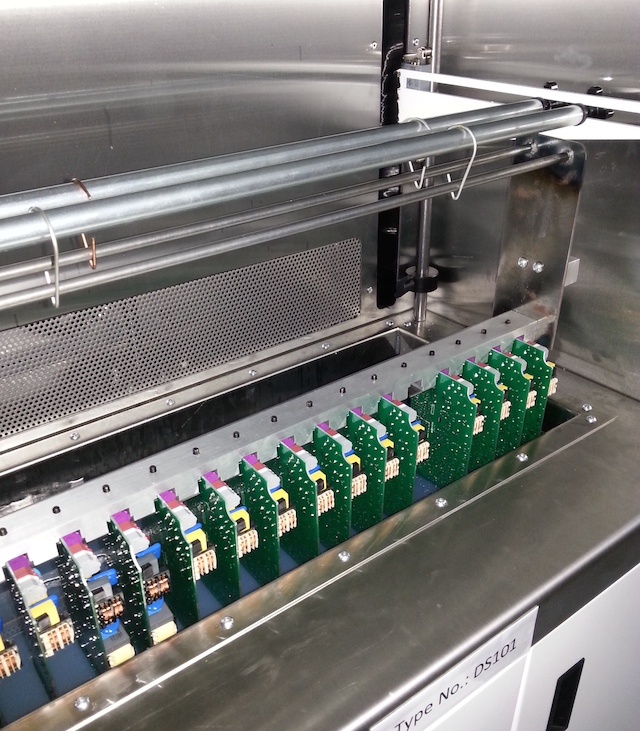A conformal coating can be applied in many ways to a printed circuit board assembly (PCBA). The many methods include spraying, brushing and dipping.
Dip coating is one of the most efficient methods for application of conformal coatings and is excellent for all volume production whether large or small.
However, the dip technique really excels in high volume production since multiple circuit boards can be coated simultaneously.
The actual process of dipping a circuit in conformal coating is simple. Plunge the material in and pull it out. You have a coated circuit board.
However, this may not give you the best conformal coating coverage depending on the way you process it and the viscosity of the coating.
If however you require a uniform controlled conformal coating thickness from your dip process then you have to apply a bit more application control.
How to achieve process control when dipping
The process of dipping a circuit board into a conformal coating material contained in a dip tank is really about ensuring you control four key factors.
These four factors are:
- The viscosity of the conformal coating
- The immersion speed of the PCBA going into the tank
- The dwell time (time where the PCBA is held stationary in the tank)
- The withdrawal speed of the PCBA coming out of the tank
Control these four factors will ensure complete uniform coverage at the right conformal coating thickness, including underneath components and around difficult large 3D boards.
In reality this is quite difficult to do manually. The actual control of the immersion, dwell and withdrawal speeds may need an automated process such as a conformal coating dip machine to really ensure you get the best coverage.
However, combining the control of the speed in and out with control of the viscosity of the material defines the coating thickness of the printed circuit board and the tolerance can be controlled extremely accurately.

Ask us how we can help you with your conformal coating dip process requirements
Talk to us about your project. See how we can save you money now.
We have the knowledge, tools, experience and the complete solutions whatever you need. We are here to help.
Contact us now.
